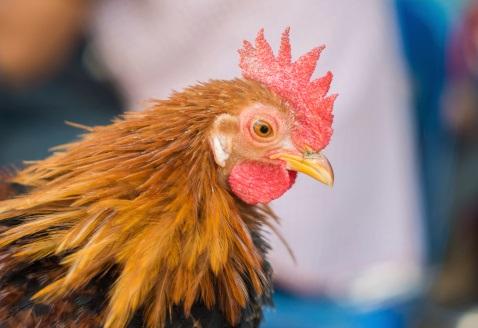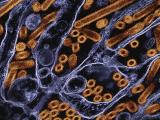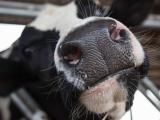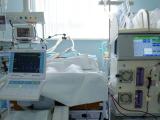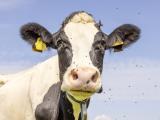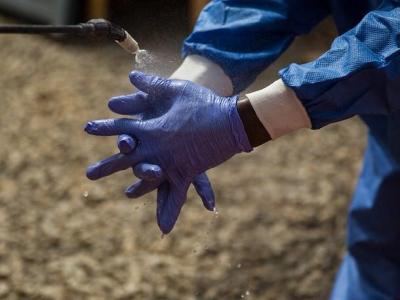Chinese health officials today reported an H7N9 influenza infection in a man from Shandong province whose father recently died from the disease, as research teams from China found new clues about how the virus is changing and affecting poultry purchases.
City officials in the Shandong city of Yantai said the 61-year-old father died May 23 from respiratory distress and multiple organ failure, according to a report today from Xinhua, China's state news agency. He experienced his first symptoms on May 6, and lab tests confirming his H7N9 illness were announced on May 23.
The man's 33-year-old son got sick with a fever on May 15, was hospitalized on May 20, and is receiving intensive care, according to the Xinhua story.
It's not clear if the man and his son had the same poultry exposure. Influenza experts have said the H7N9 virus doesn't spread easily from person to person, but that the virus can spread during prolonged unprotected contact, such as when people care for sick family members.
Shandong is located north of the main outbreak area and has now reported five H7N9 infections. The new illness boosts the overall outbreak total to 447, of which 311 were reported in the second wave of infections; 136 cases were reported last spring during the first wave. The latest death lifts the unofficial fatality count to 157.
Gene study finds H7N9 changes in second wave
In research developments, one of the first major genetic analyses of human H7N9 samples from the outbreak's second wave revealed that recent isolates differ from those that sickened patients in the first wave. The researchers from Guangdong's Center for Disease Control and Prevention published their findings in a letter in the May 23 online edition of Emerging Infectious Diseases.
The team did a phylogenetic analysis of whole genome sequences from 15 H7N9 viruses isolated from patients in Guangdong province between Nov 4, 2013, and Jan 15, 2014. The outbreak's second wave started in October and has now tapered off to just a few cases a week.
The researchers found that viruses in the second wave differed in five of eight RNA segments from isolates from the outbreak's first wave. They also found that the five segments that different had a high degree of similarity with local H9N2 viruses, which the team said suggests rapid and continuing reassortment during the second wave.
Because the changes could impact the ability of the virus to replicate and infect humans, they said more studies are needed to flesh out the role of the genetic changes they found.
Analysis tracks H7N9 path to Zhejiang province
Meanwhile, a genetic study of two H7N9 isolates from Zhejiang province's first cases during the first wave showed significant mutations and more clues that poultry markets play an important role in H7N9 circulation. The research team, which mainly consisted of scientists from Zhejiang province, published its findings in the May 24 online edition of Virus Research.
When the authors compared sequences from the two patients with the first three samples from China's Center for Disease Control (China CDC), they found several new mutations in the Zhejiang isolates. Phylogenetic analysis showed that one of the viruses might have come from Jiangsu province, with hints that H7N9 was transmitted to Zhejiang province within a short time and may have been circulating in urban areas of southeastern China.
The team also notes that the reopening of Zhejiang's live poultry markets because of economic and political pressure during the last months of 2013 preceded the spike in confirmed cases leading up to the 2014 spring festival. They wrote that provincial officials will permanently shutter all live poultry markets in July 2014.
Gauging outbreak impact on poultry purchases
In other poultry research findings relating to the H7N9 outbreak, a study of purchasing patterns at live poultry markets in Guangdong found that more than half of respondents stopped buying live birds after news of the H7N9 virus was announced in China.
Researchers from Guangzhou, the province's capital, published their findings today in a letter in Emerging Infectious Diseases.
They did telephone interviews with 1,177 people in different parts of Guangzhou from May 30, 2013, to Jun 7, 2013. The sample included people who lived in an area where the H7N9 virus was found in poultry markets. At the time, no human infections had been detected.
Researchers found that the residents seemed to prefer control measures—such as market rest days—other than shuttering the markets. They suggested that progressively introducing poultry market measures might be more acceptable to the public.
Also, the findings hinted that the public sees market hygiene problems as the main cause of virus transmission, which suggests that more overall efforts are needed to highlight the risk of sales in live poultry markets.
See also:
May 27 Xinhua story
May 27 FluTrackers thread
FluTrackers human H7N9 case list
May 23 Emerg Infect Dis report
May 24 Virus Res abstract
May 27 Emerg Infect Dis report
